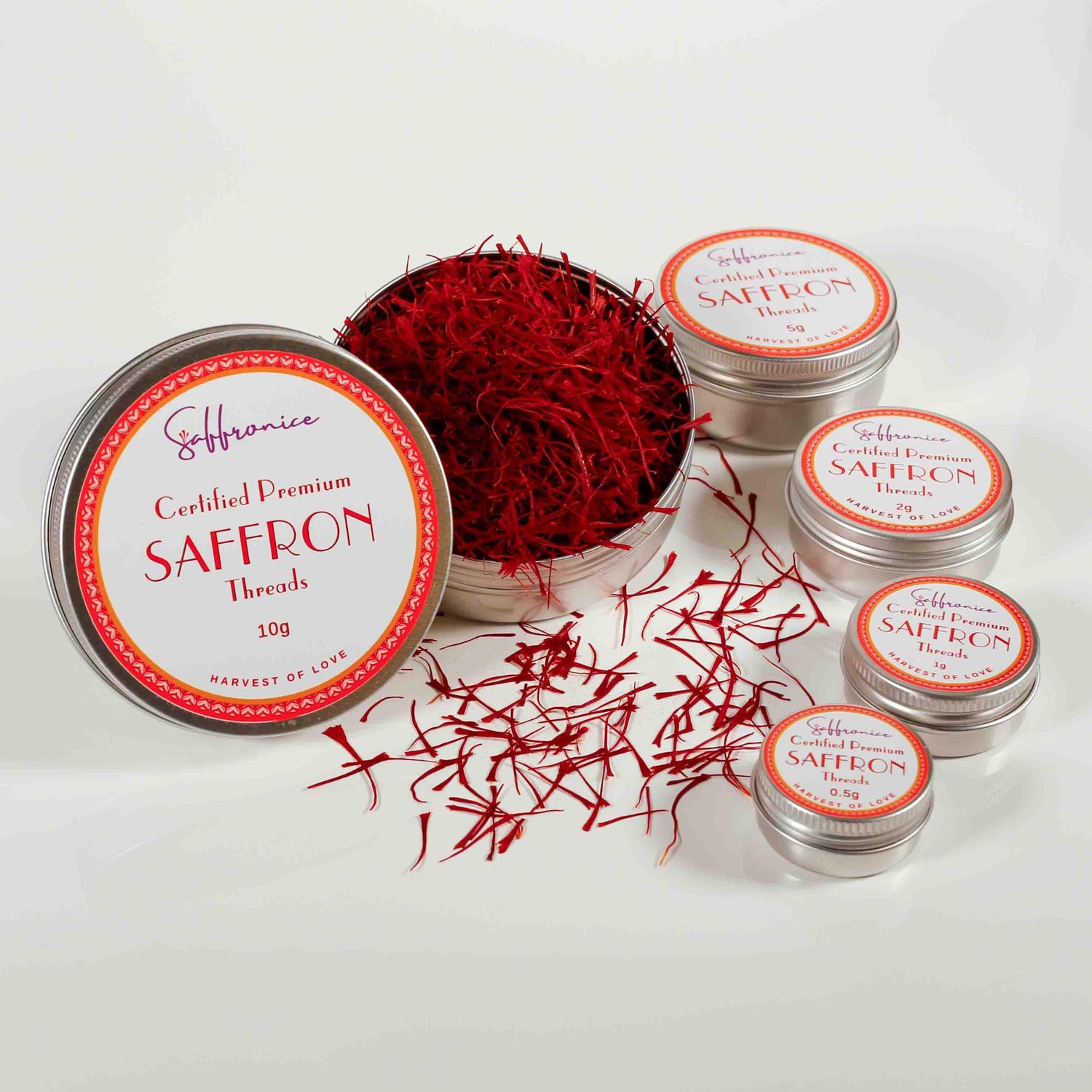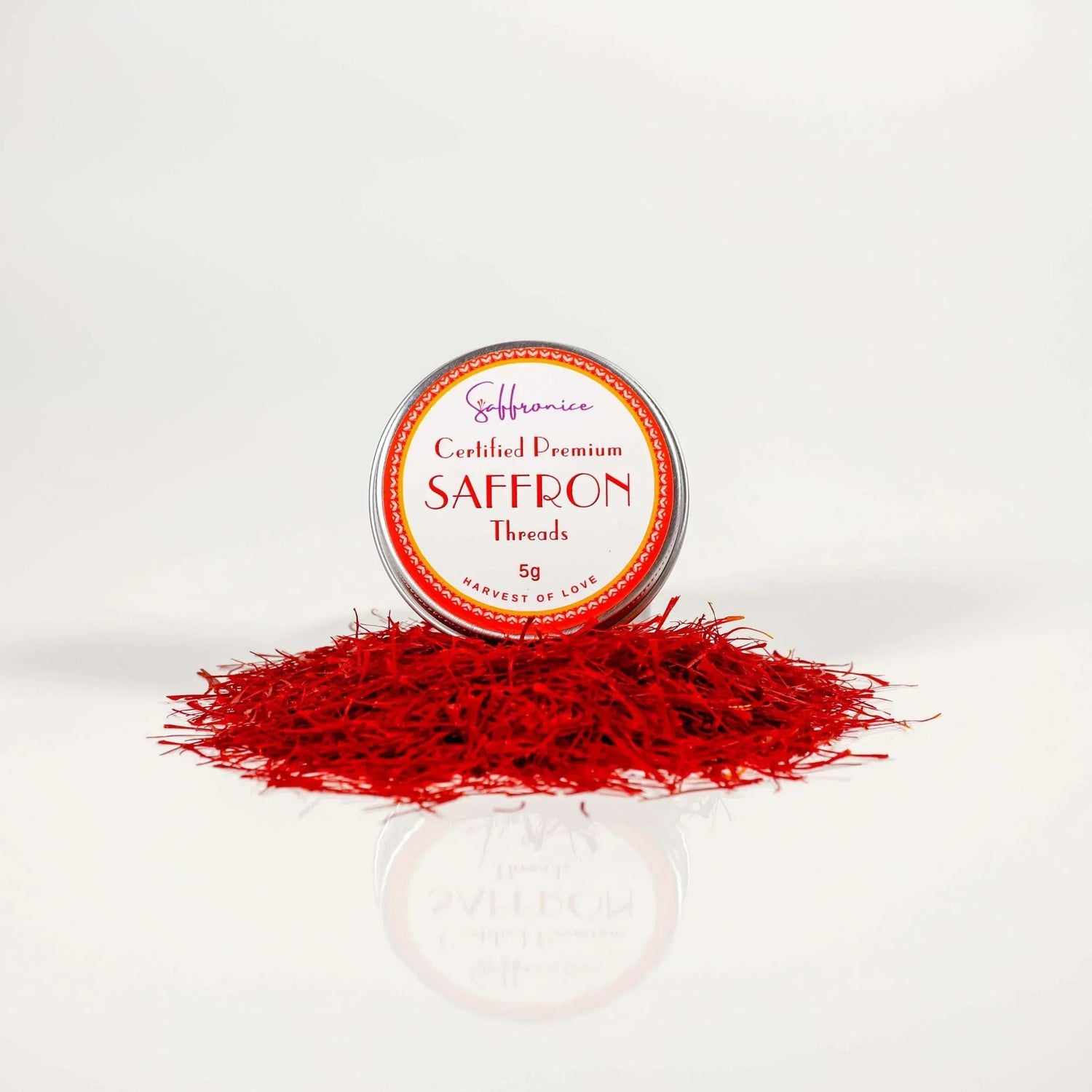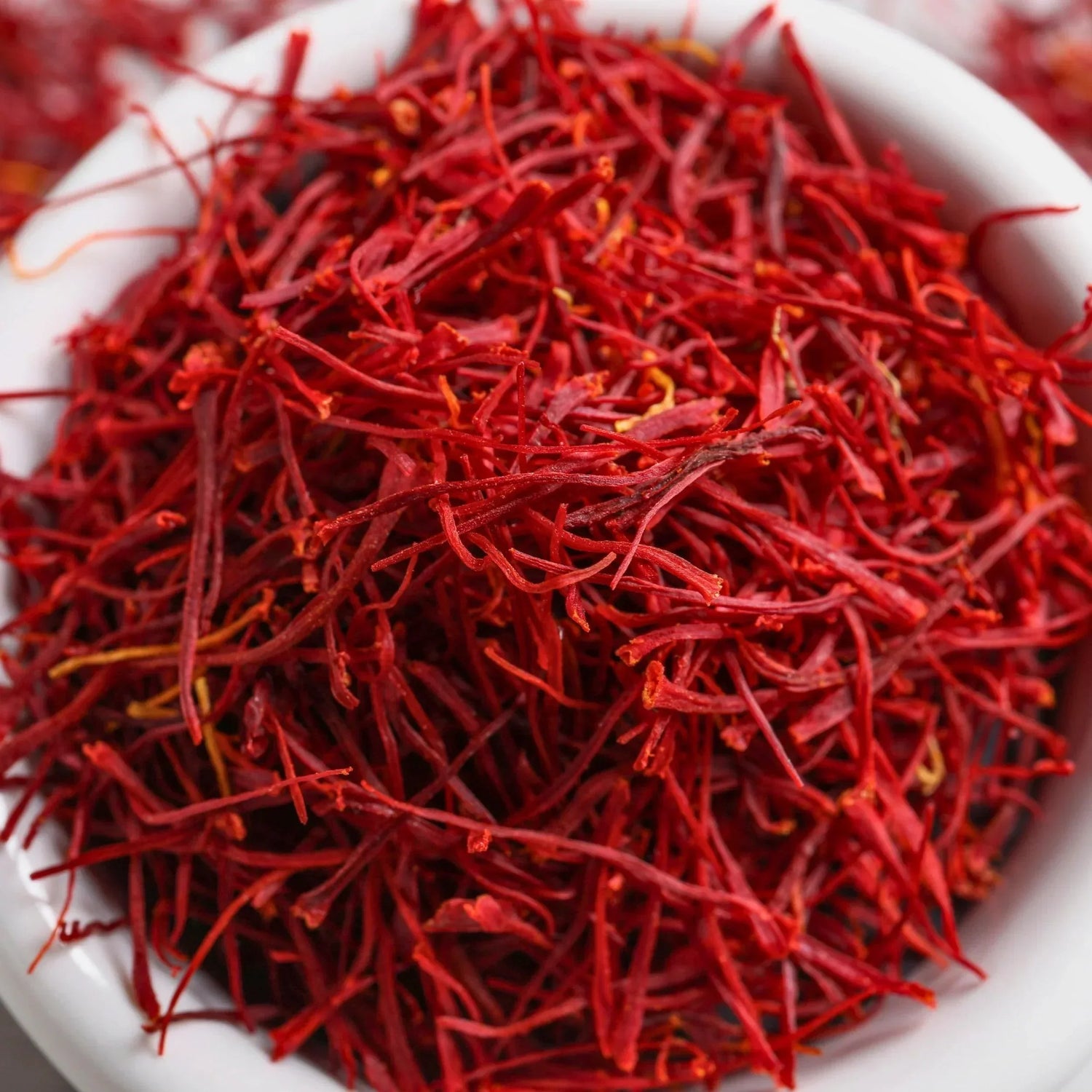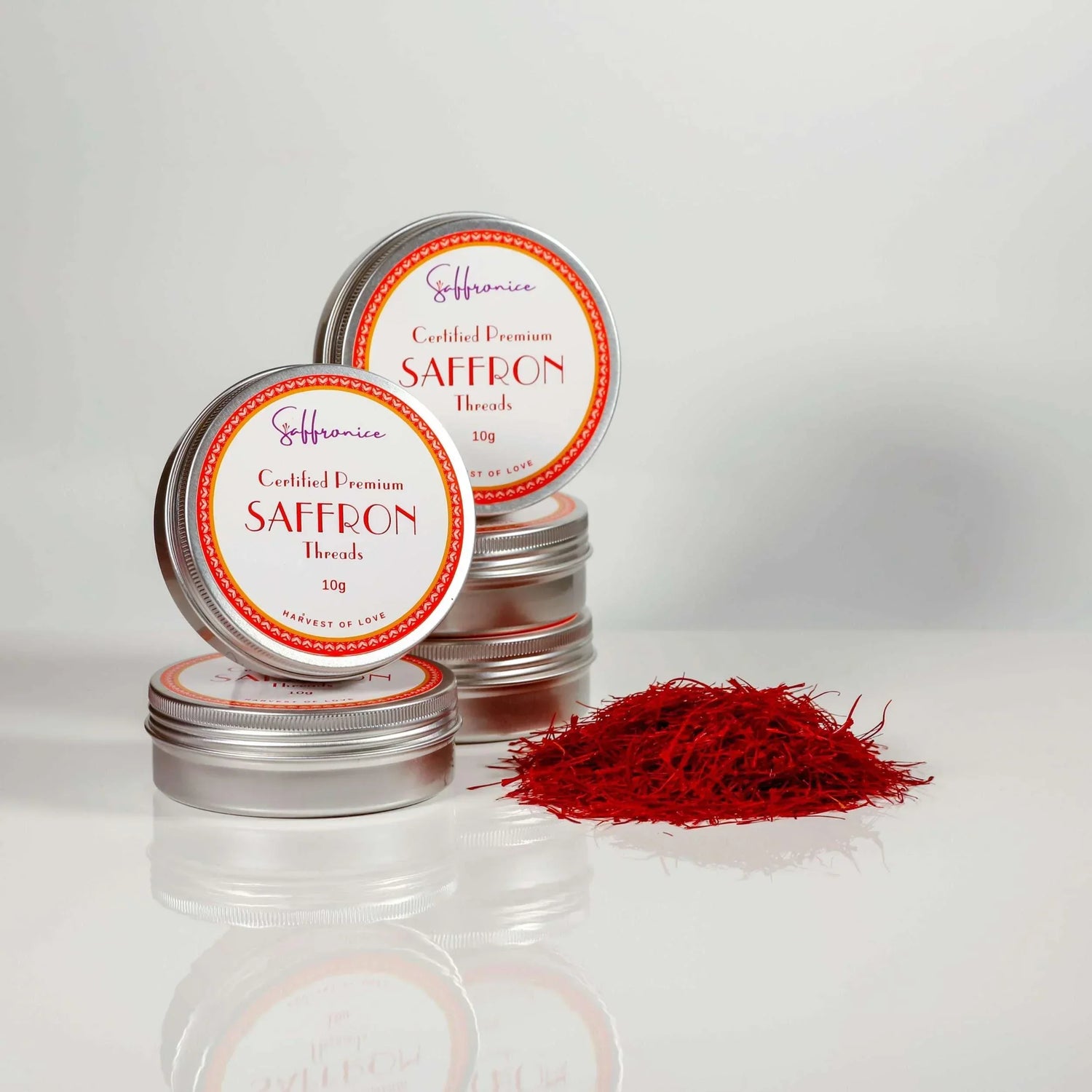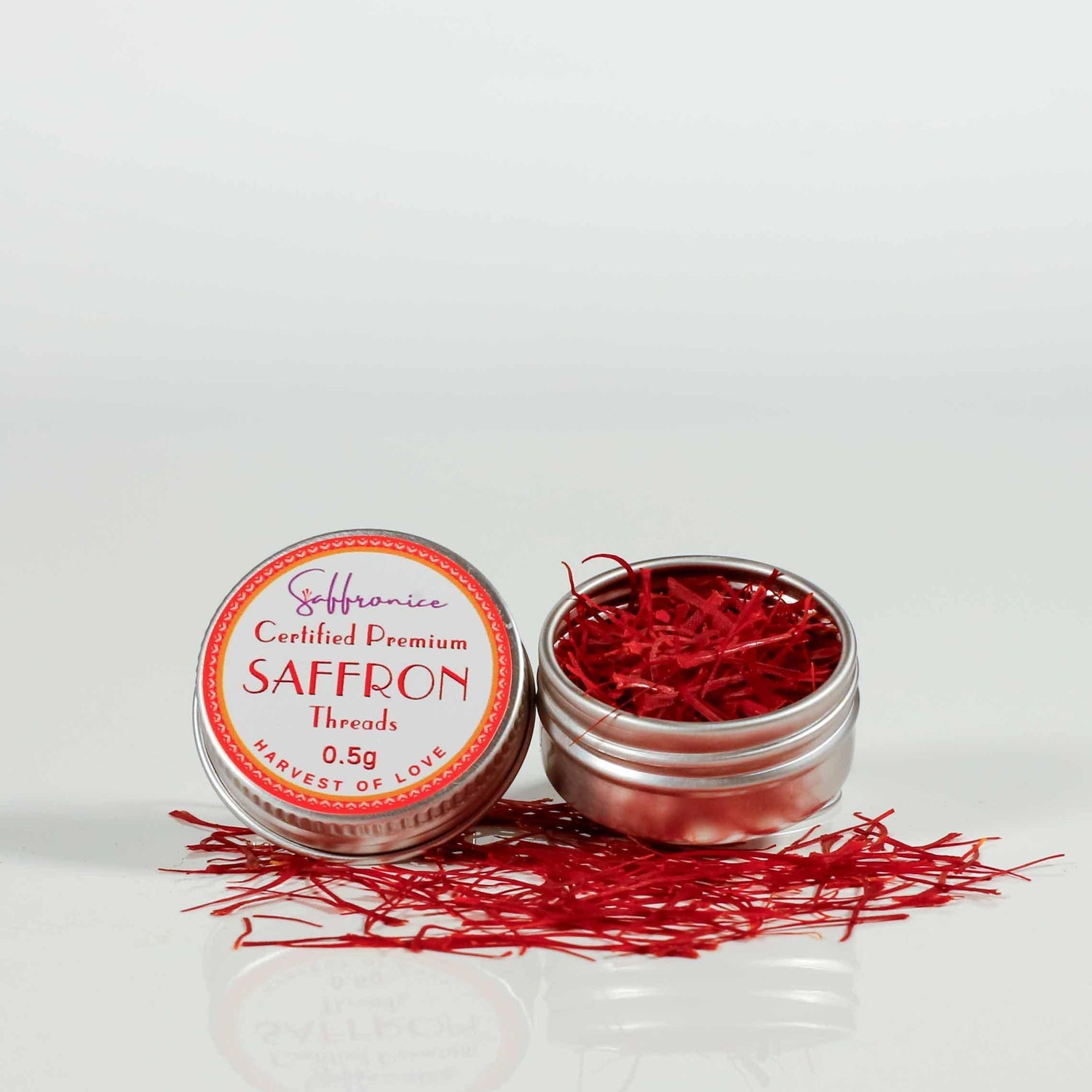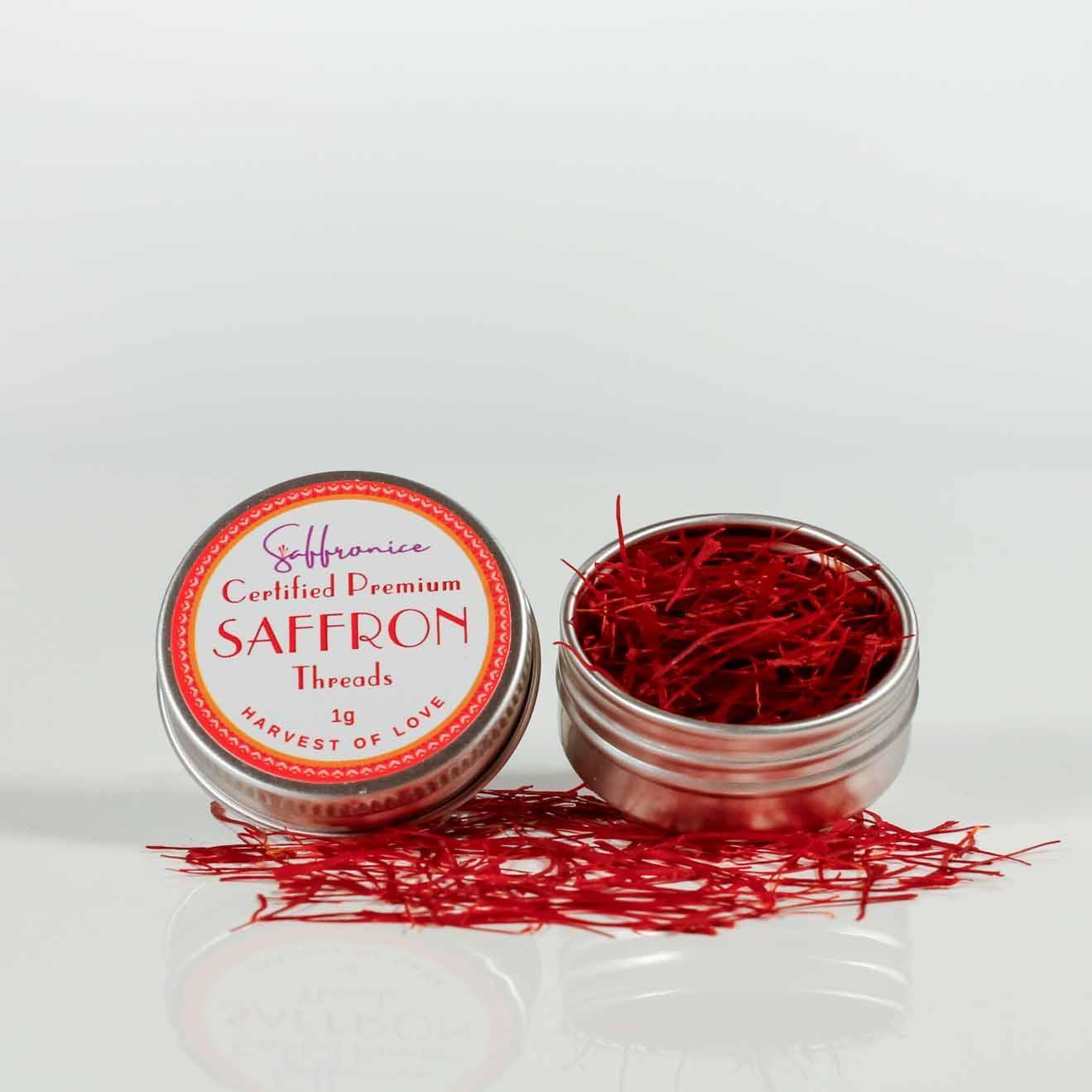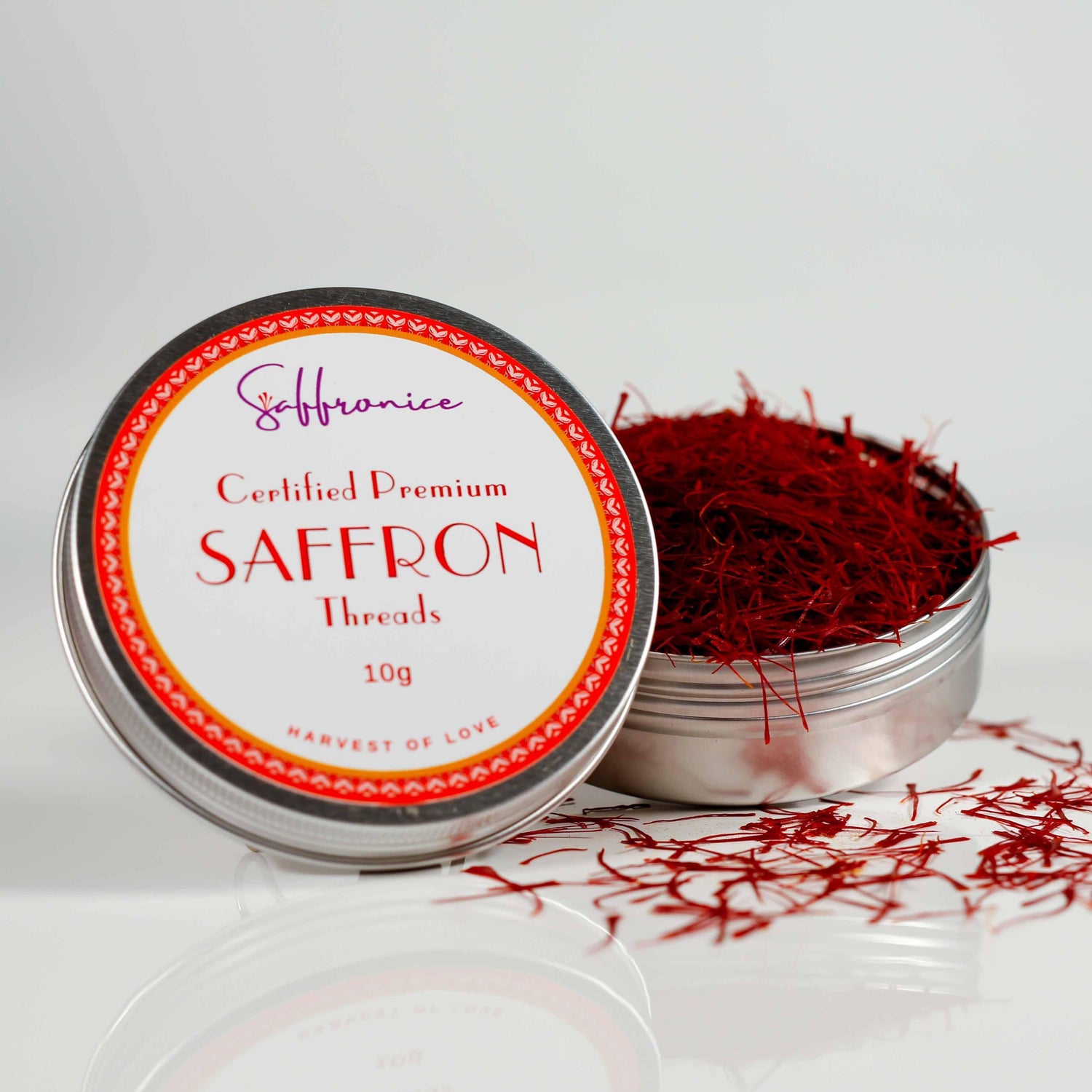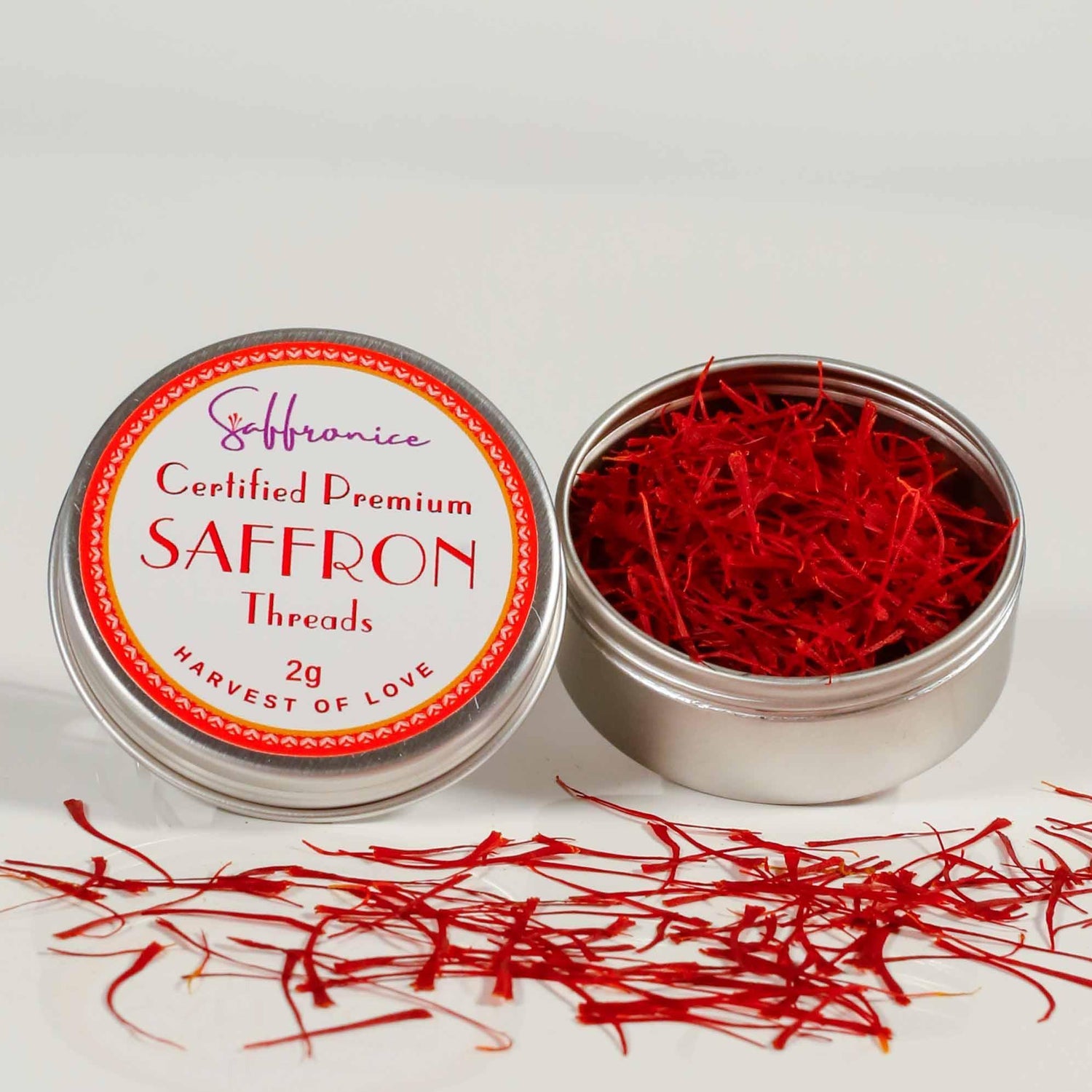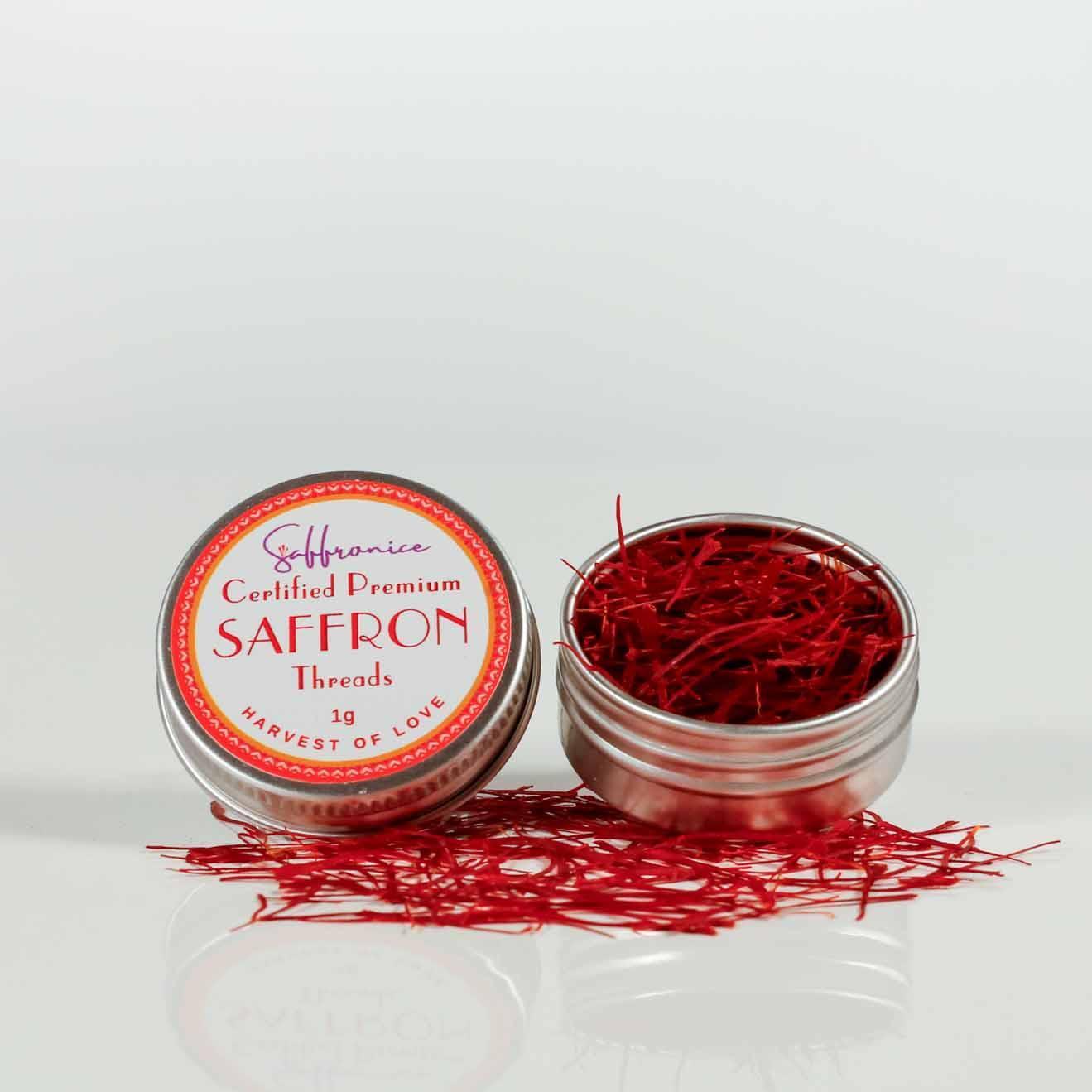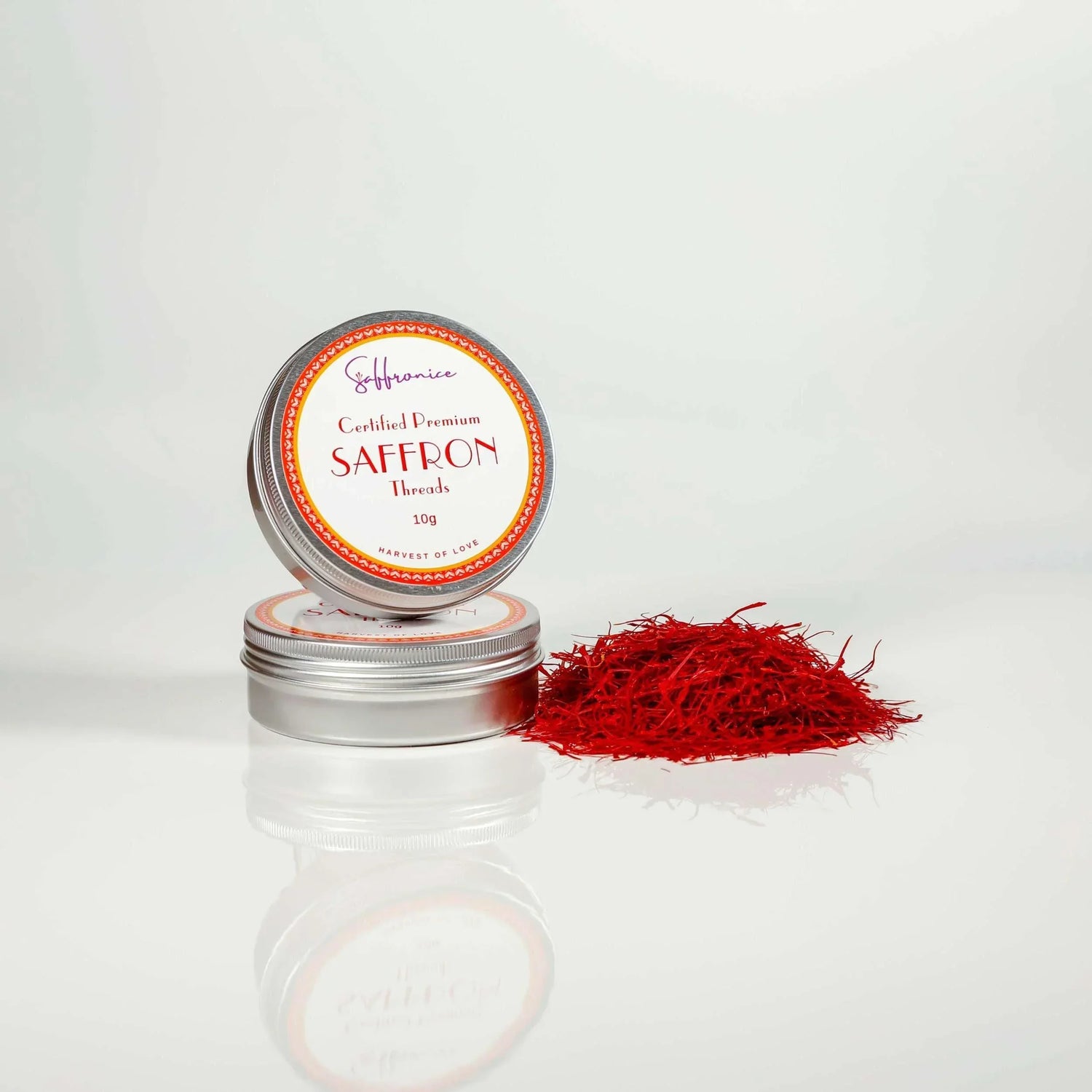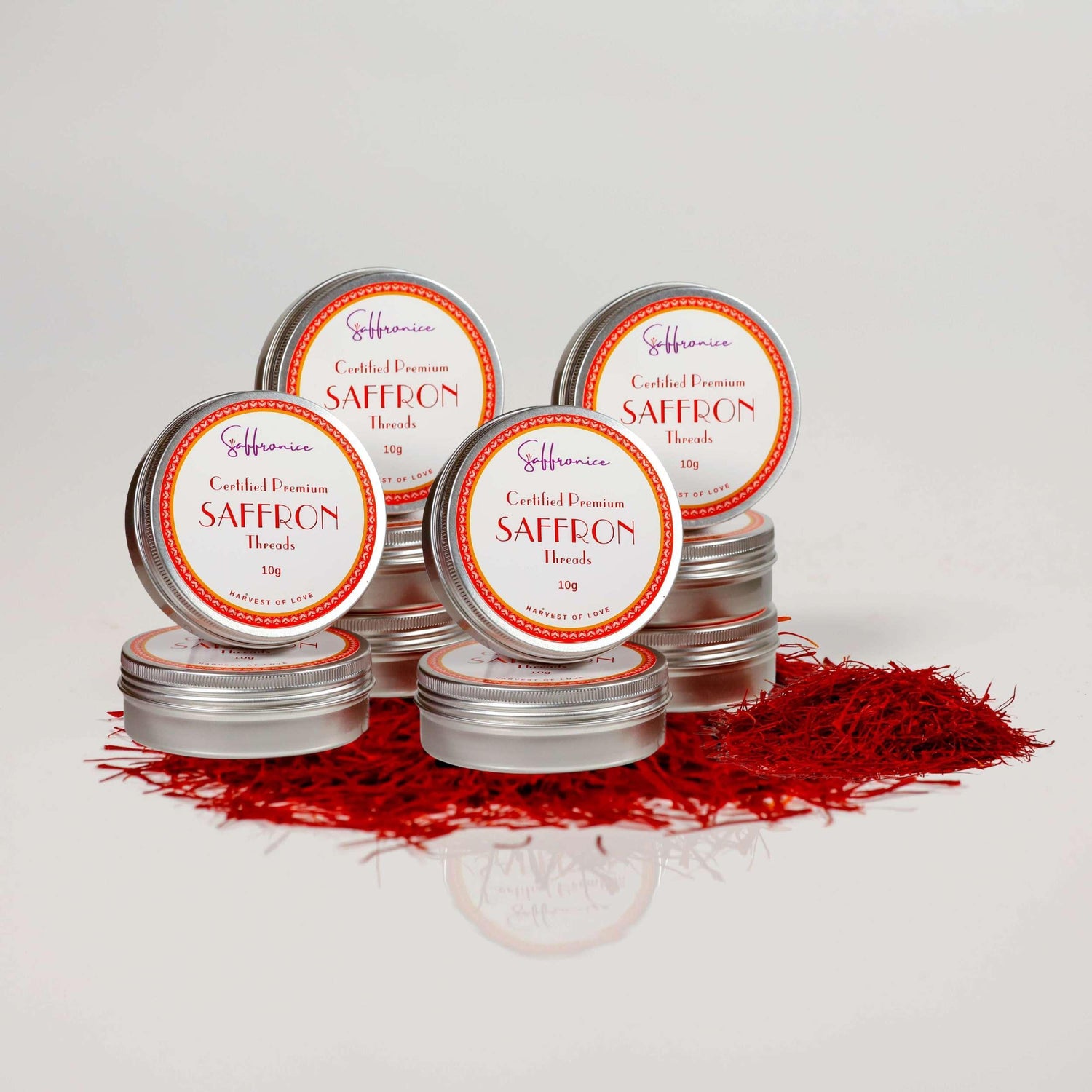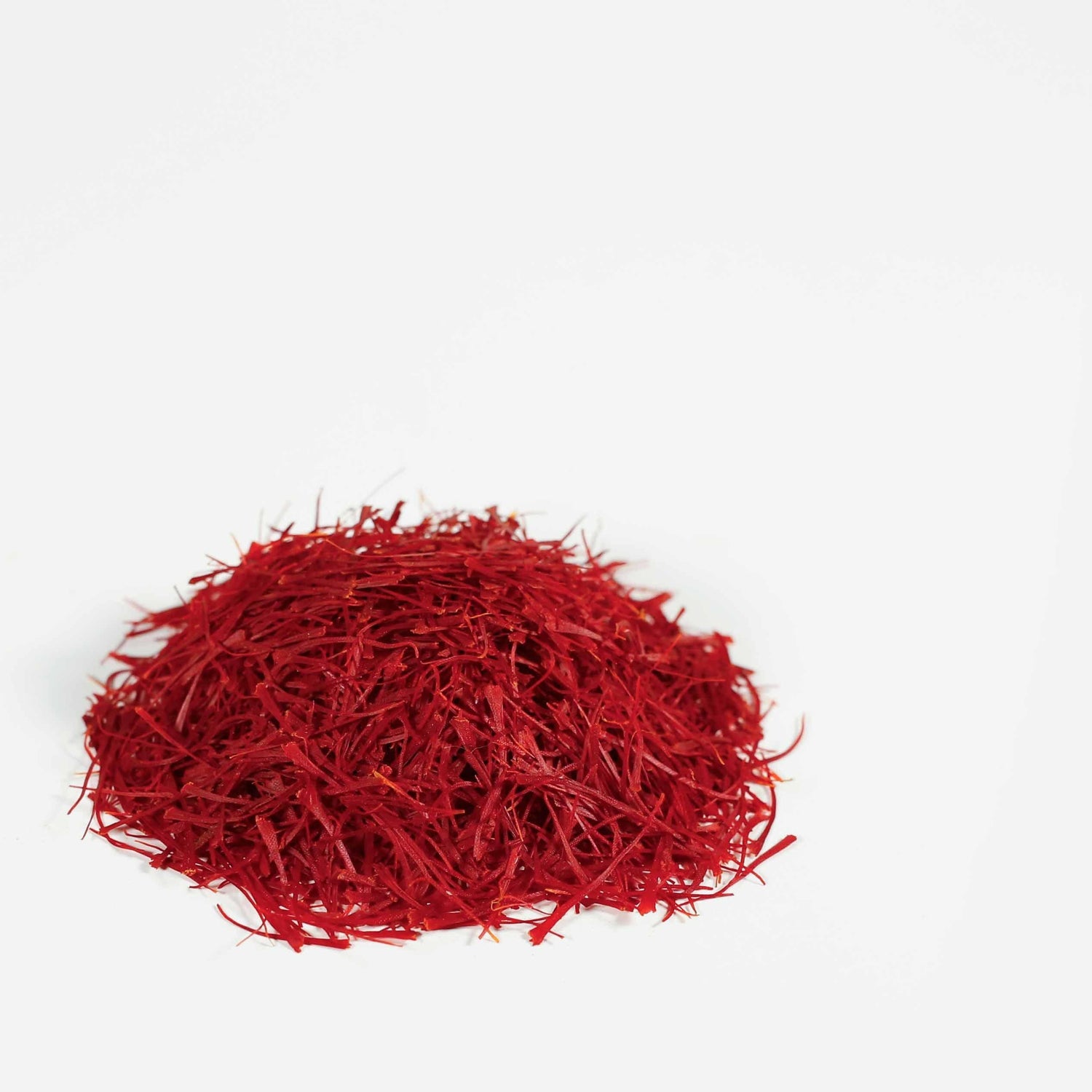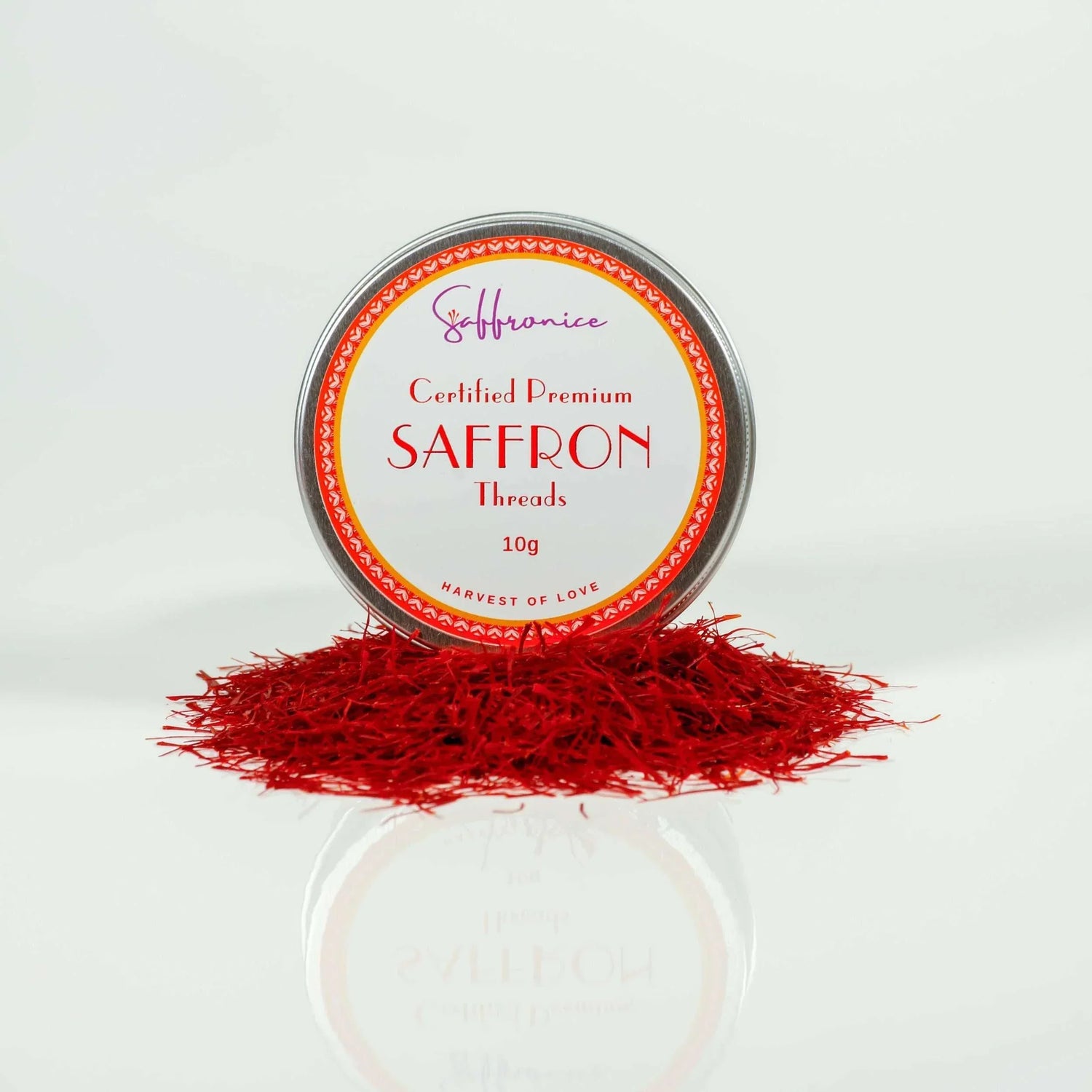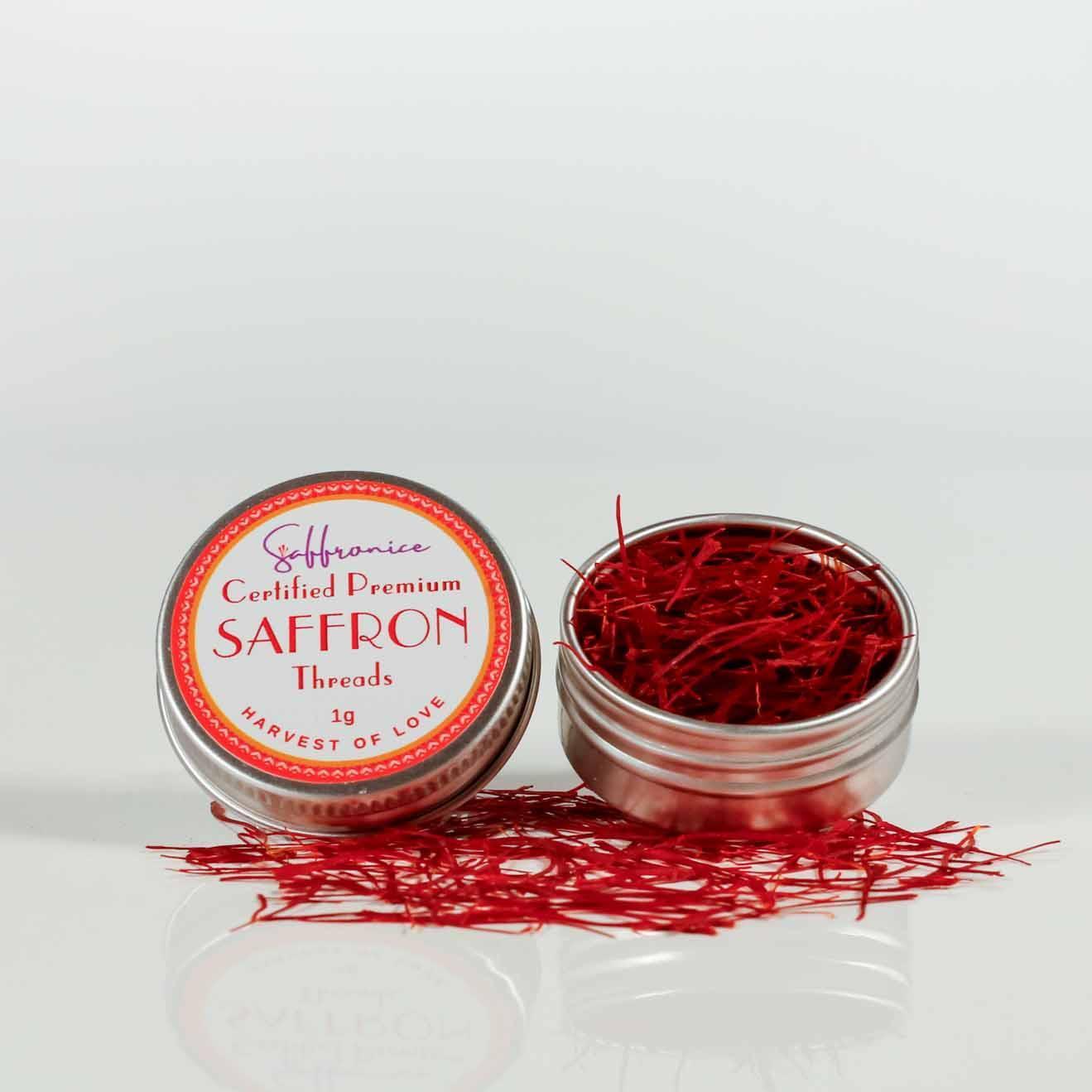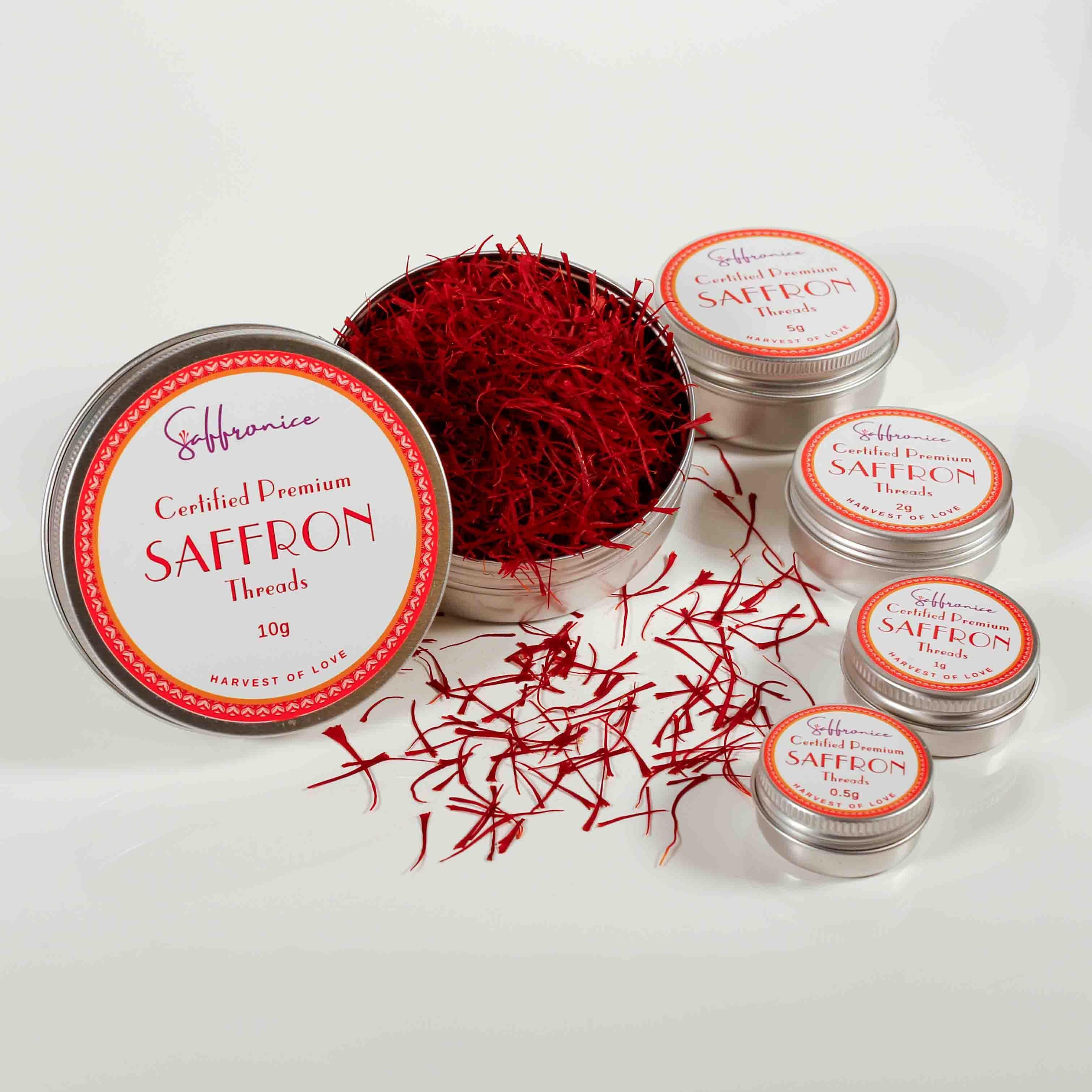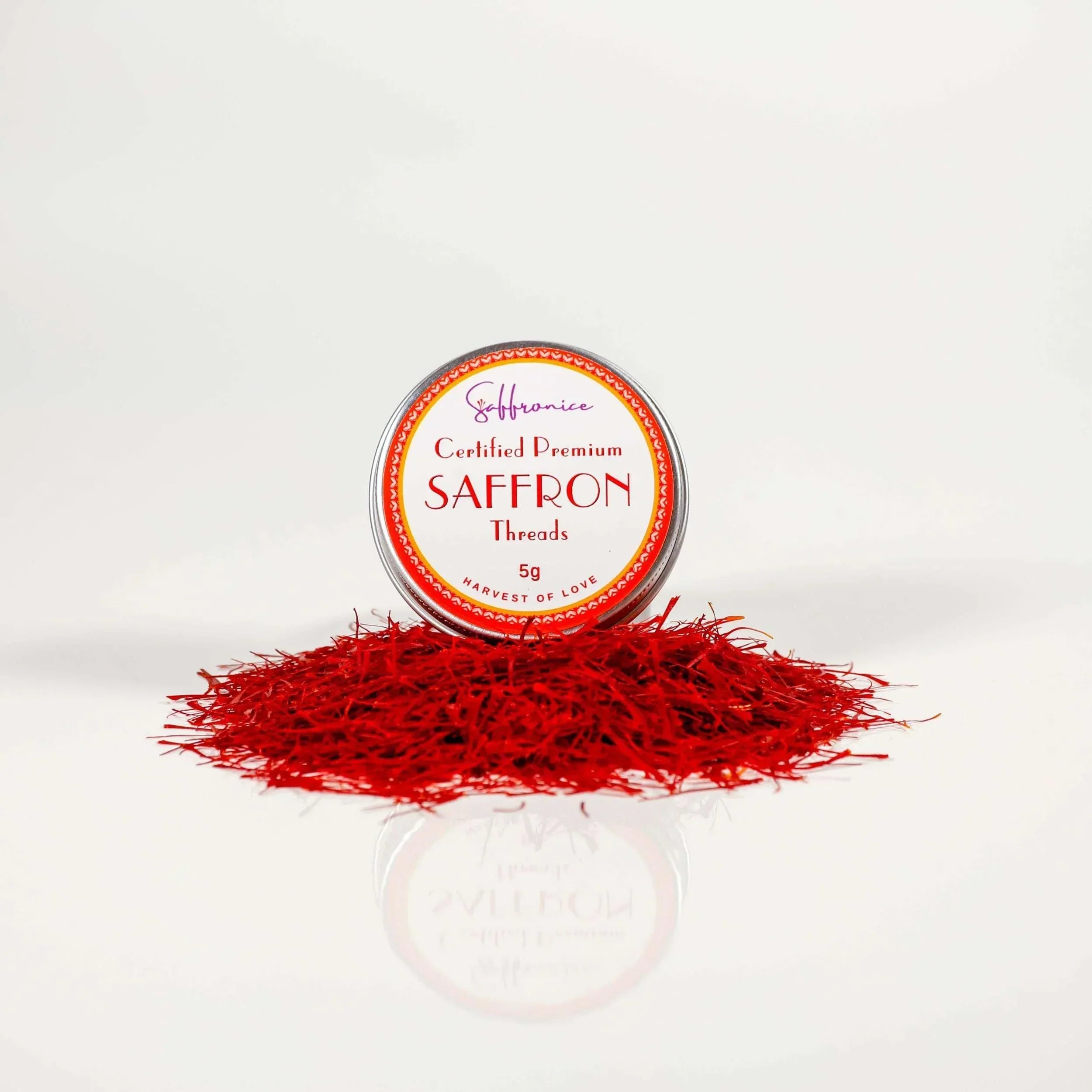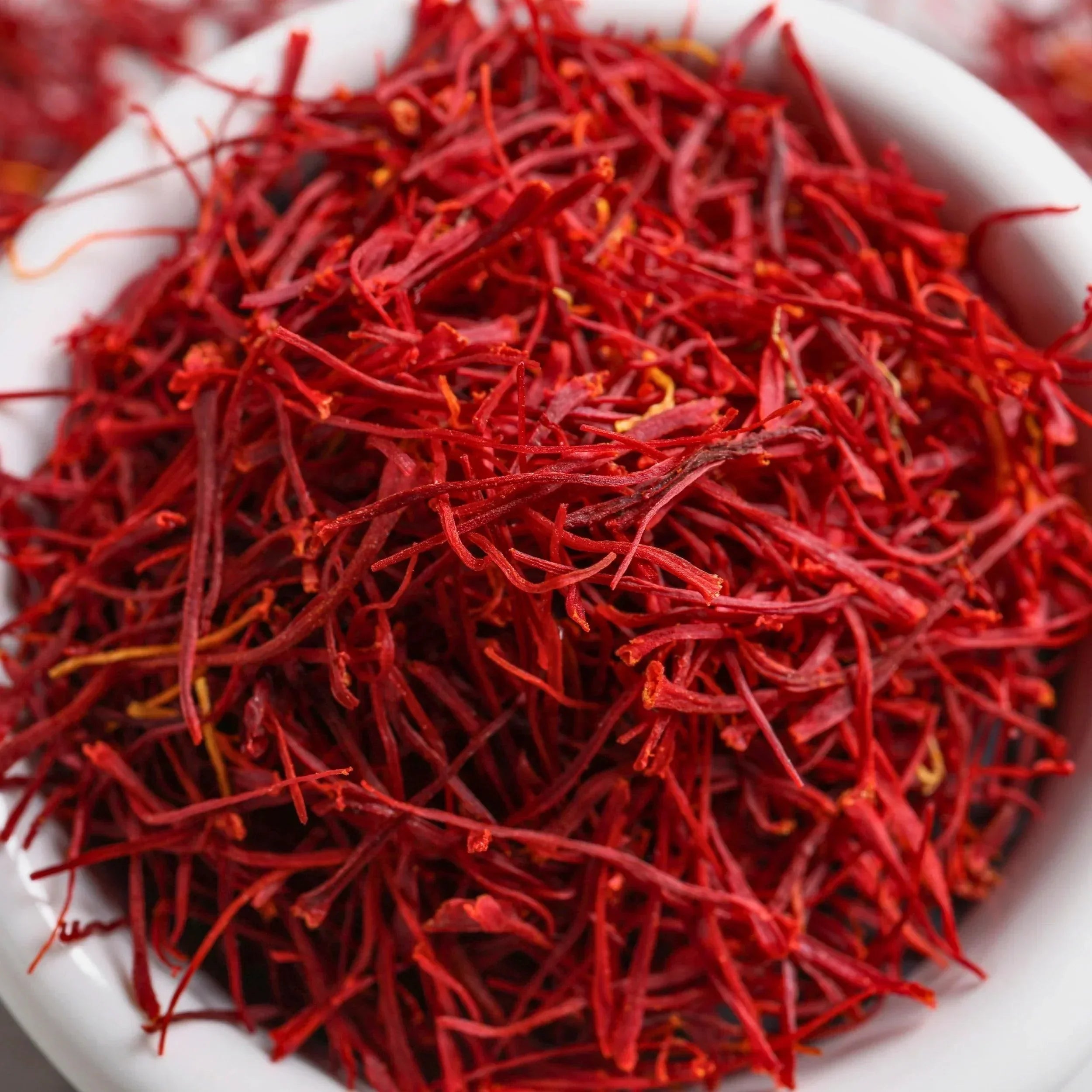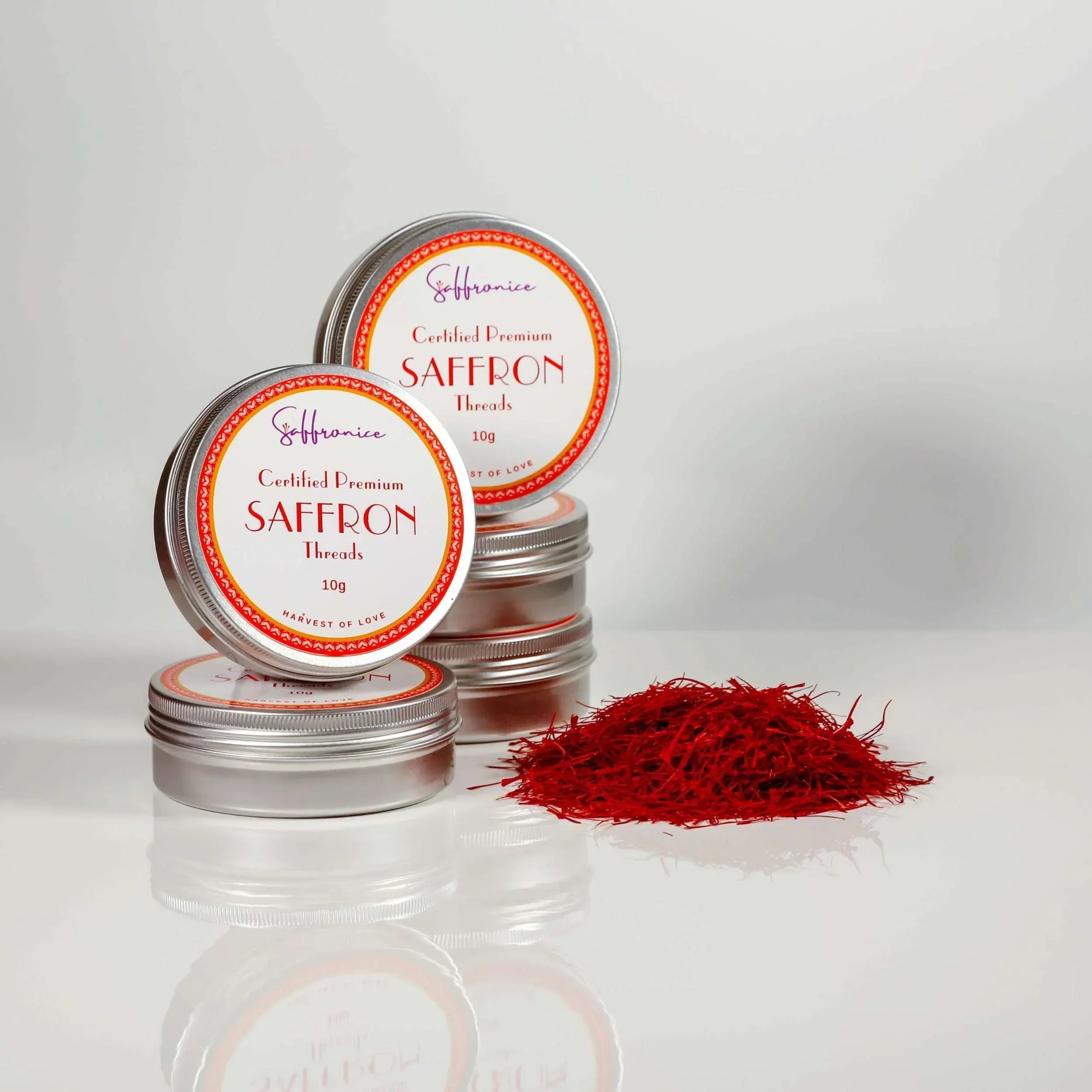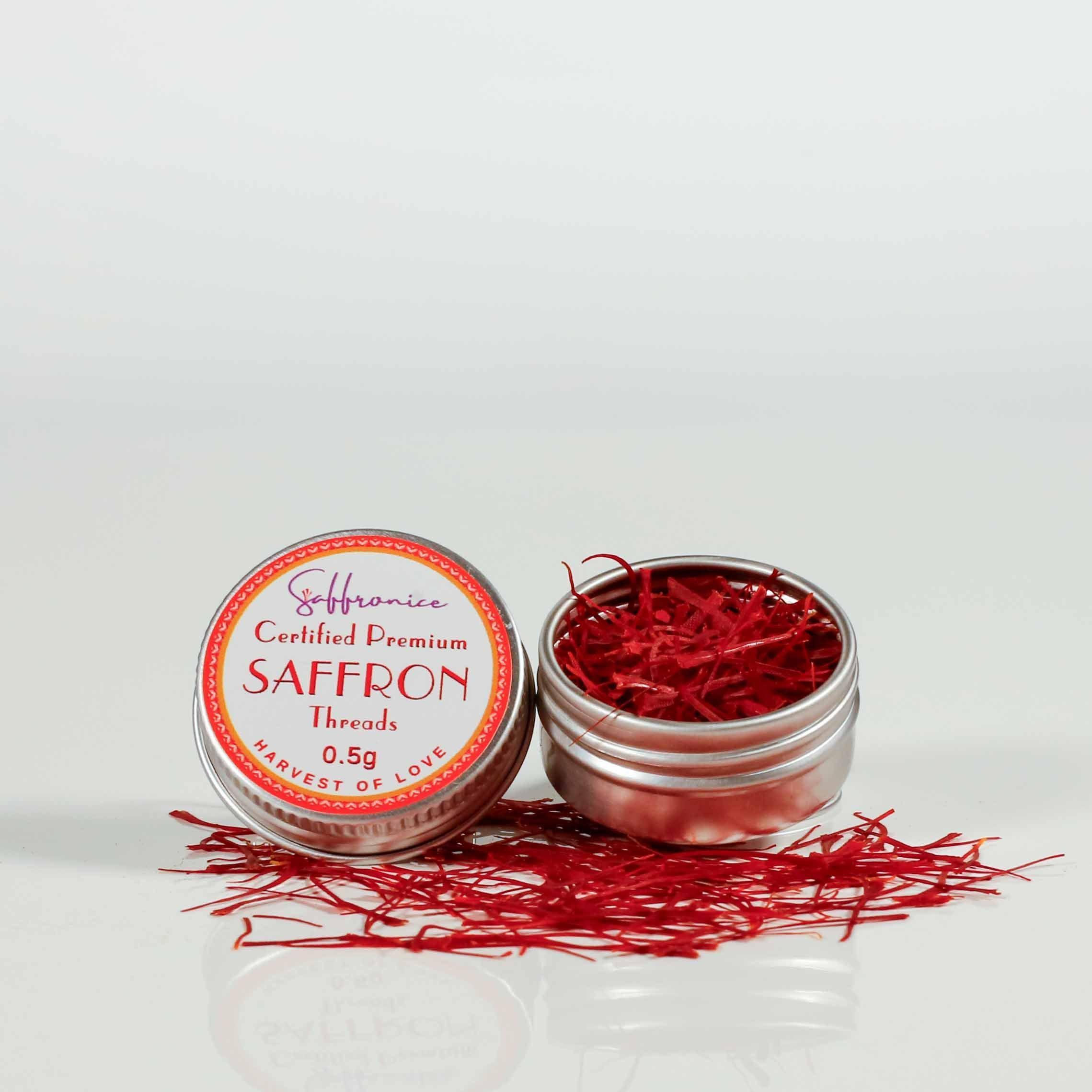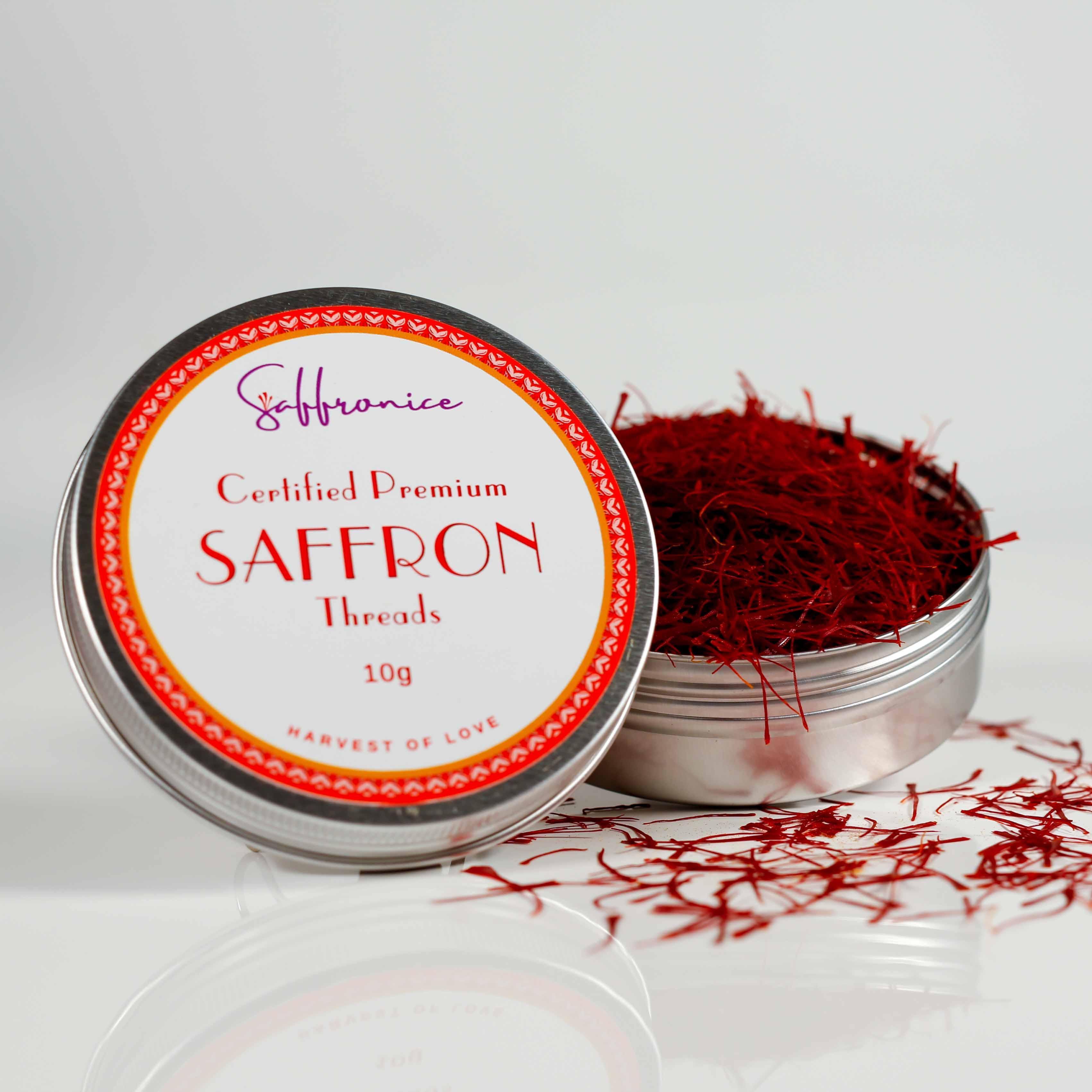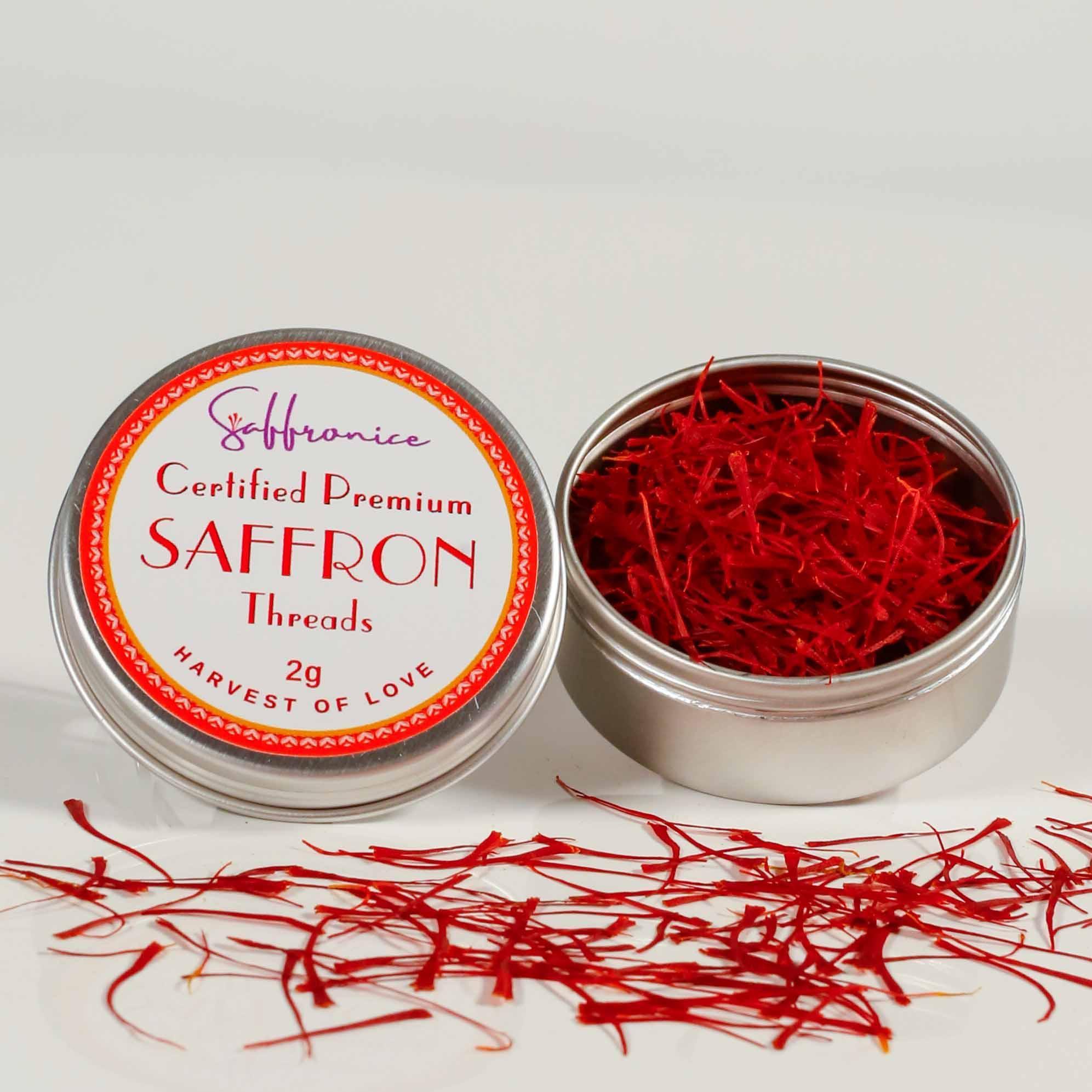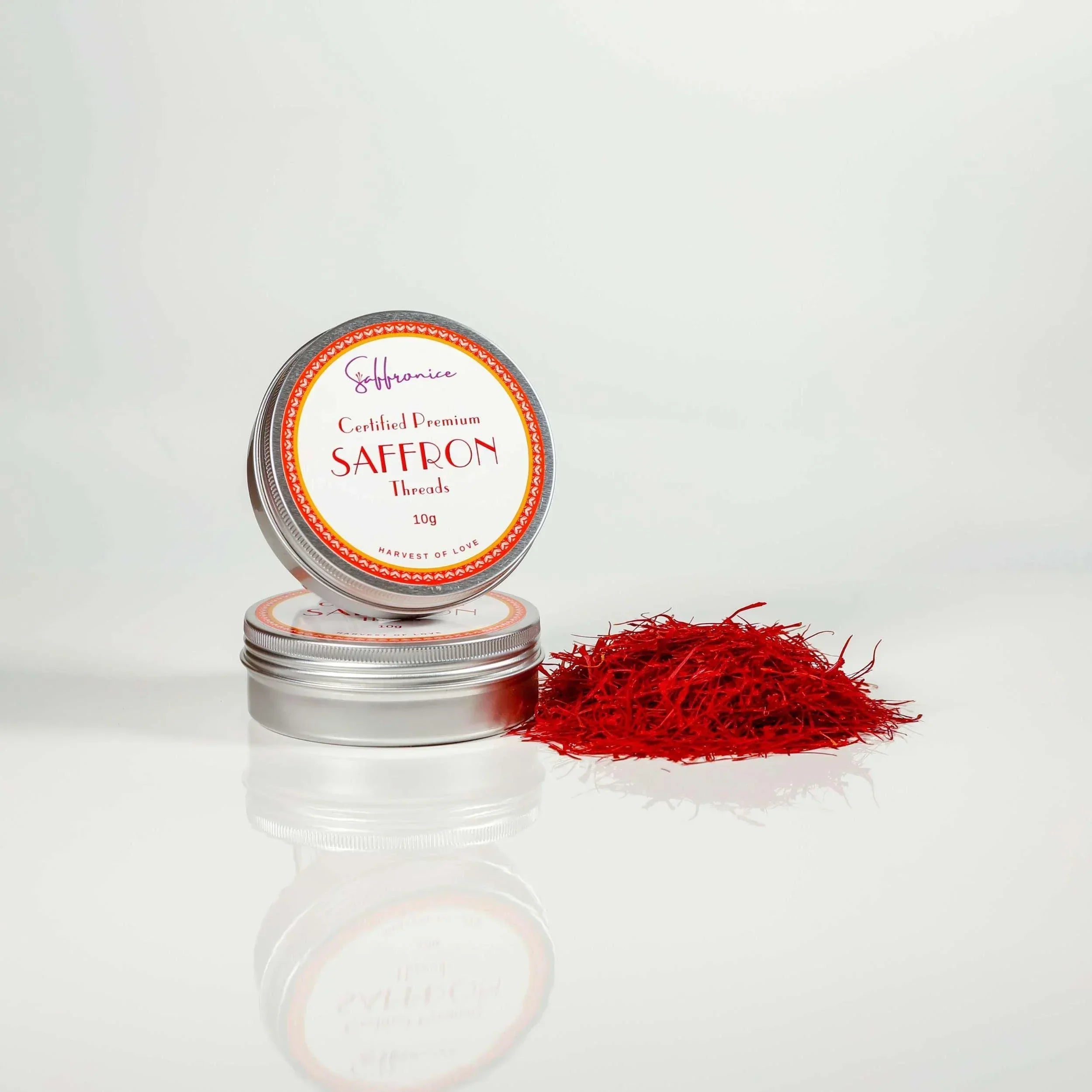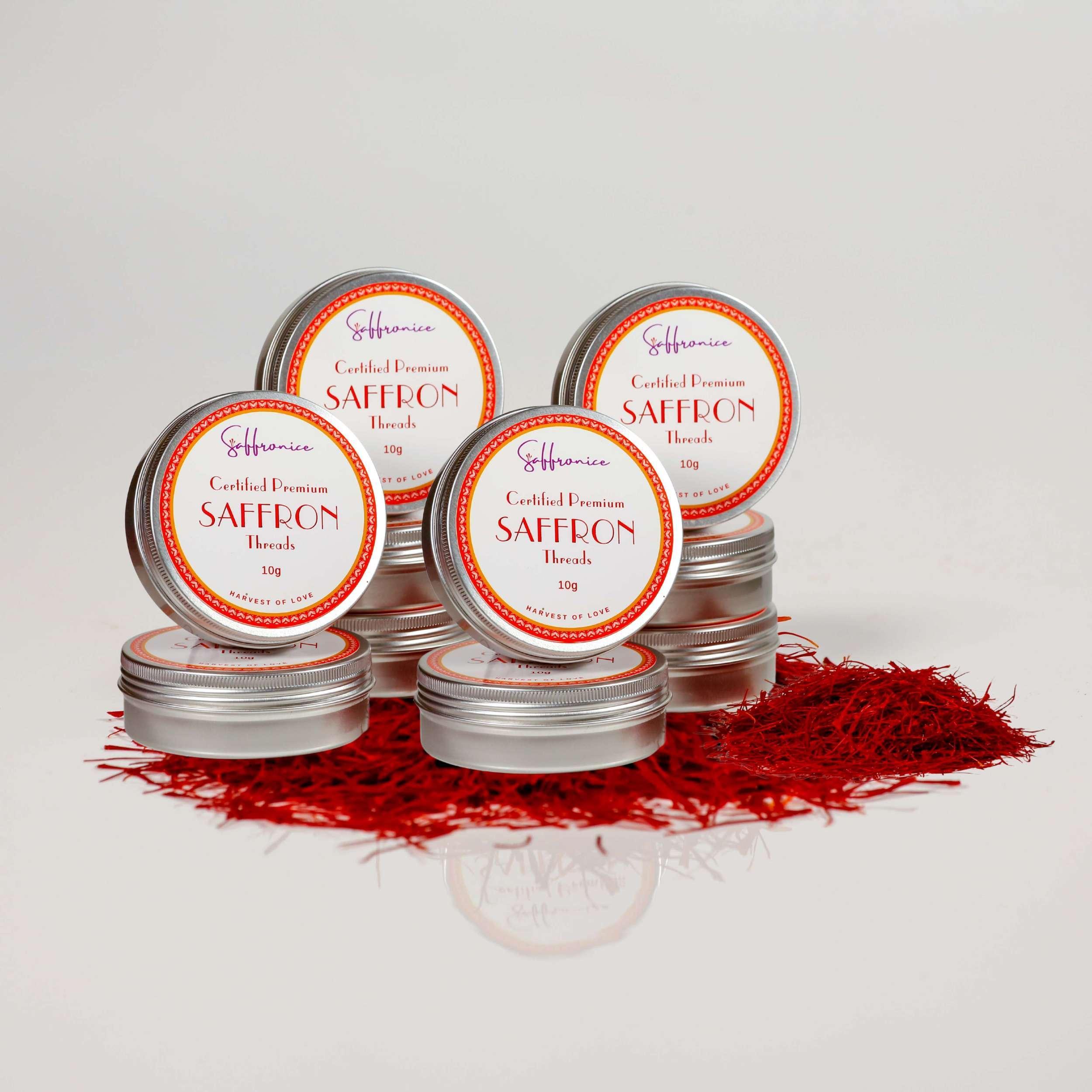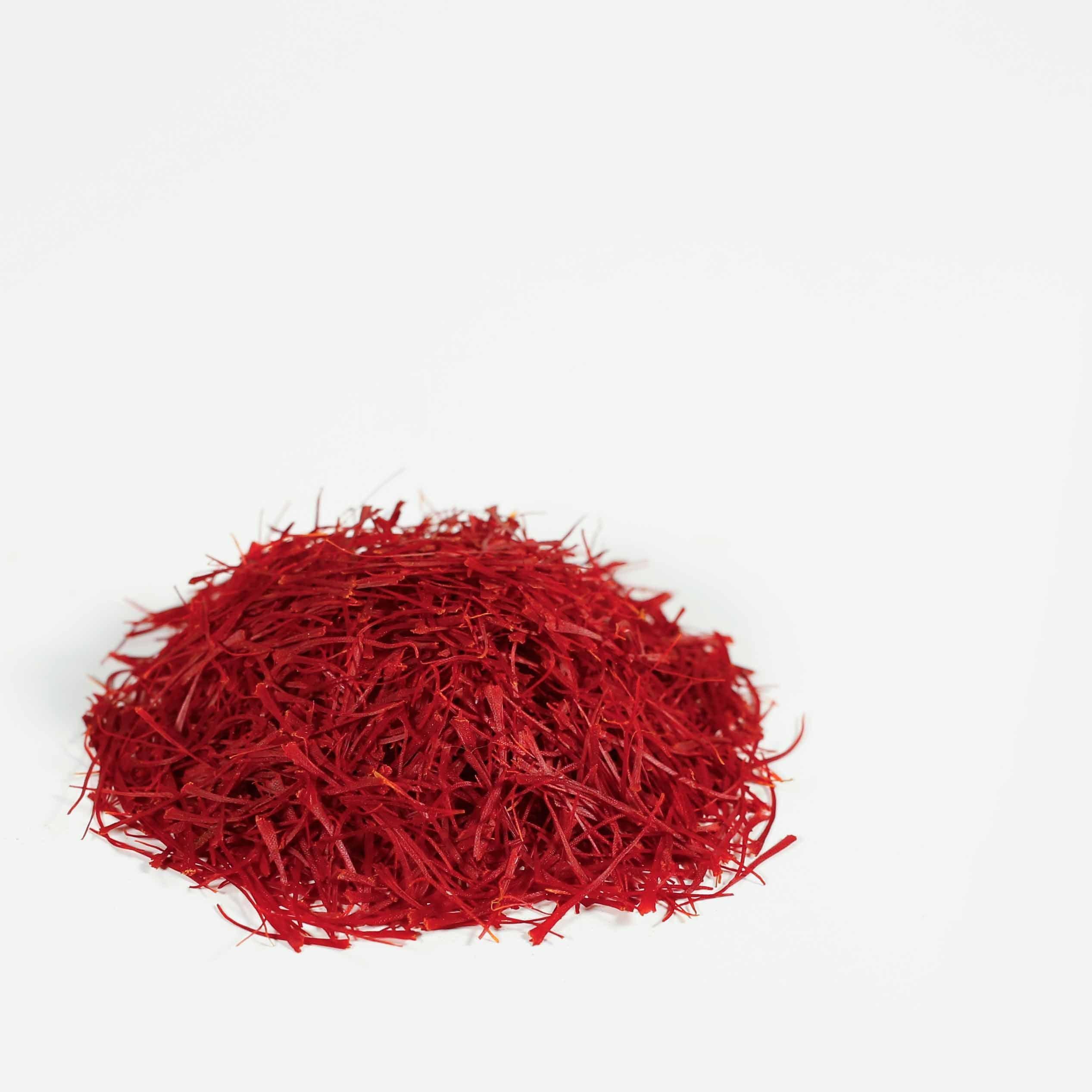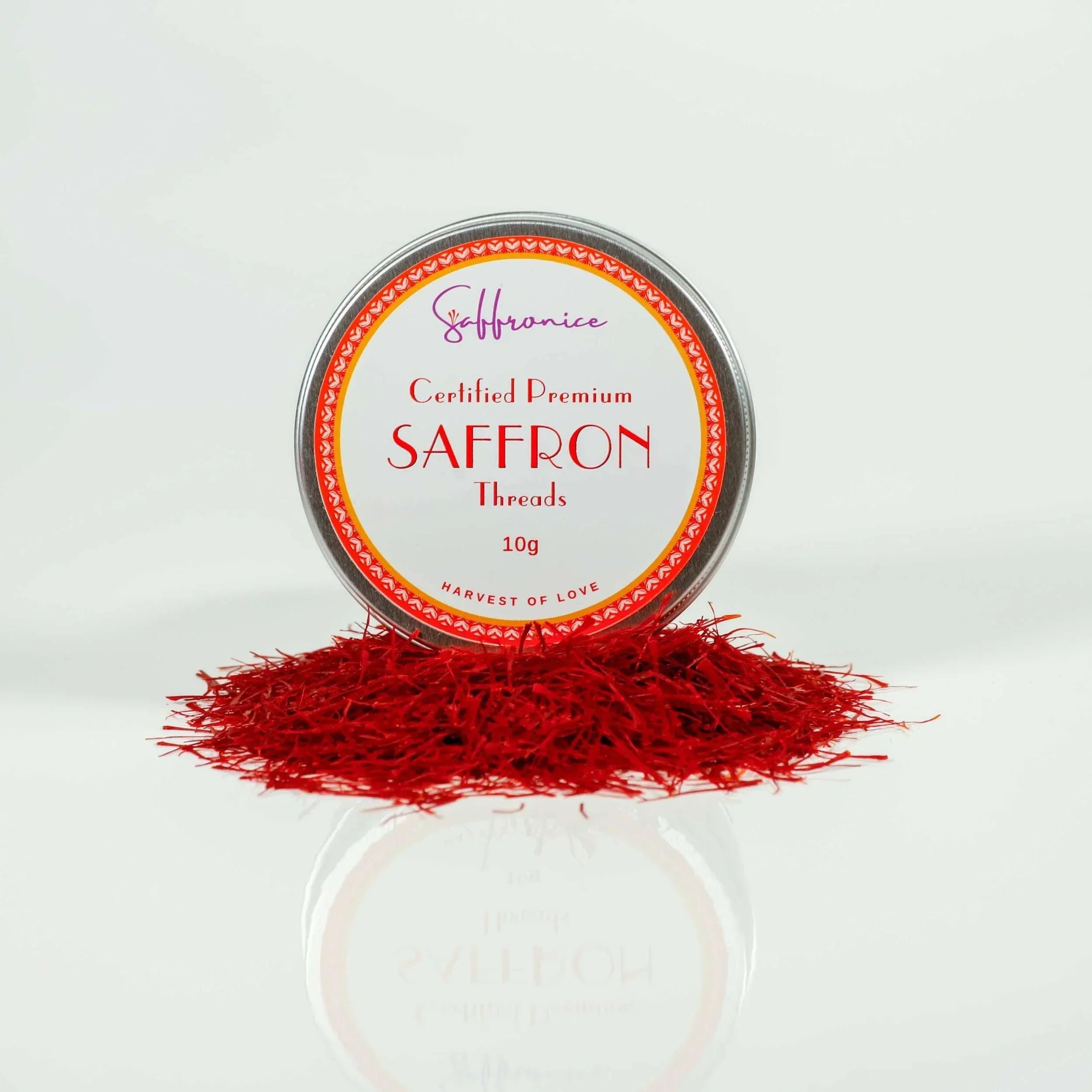Simple answer: Effective doses typically range from 100-400mg daily, though some people see benefits starting at 30mg. The "30mg standard" is actually just where researchers started for safety reasons, not necessarily the optimal amount.
What You're Really Asking
When people search for saffron dosage, they're usually wondering:
-
"Will this actually help my mood/ weight/ eye health/ Alzheimer’s/ ADHD/ anxiety symptoms?"
-
"How much do I need to see real results?"
-
"How long before I notice a difference?"
Quick answers:
-
Will it help? Yes—research shows benefits for mood, cognitive function, eye health, weight management, and more
-
How much? 100-200 mg daily for most adults (30mg often too low)
-
How long? 2-6 weeks for mood/anxiety, 4-8 weeks for weight management, 3-6 months for eye health

Instant Saffron Dosage Finder (Choose Your Goal)
For Mood & Depression: 100-165mg Daily
-
Timeline: 2-6 weeks for noticeable improvement
-
Research backing: Multiple clinical studies show effectiveness
-
Best approach: Start with one capsule daily, be consistent
For Anxiety & Stress: 100-165mg Daily
-
Timeline: 3-4 weeks for stress relief
-
How it works: Supports mood balance and stress response
-
Best approach: Take the same time each day with food
For Weight Management: 100-200mg Daily
-
Timeline: 4-8 weeks for appetite control
-
How it works: Reduces cravings, supports mood-related eating
-
Best approach: Take before meals for appetite support
For Eye Health: 30-100mg Daily
-
Timeline: 3-6 months for vision support
-
Research: Supports macular health and visual function
-
Best approach: Consistent daily intake, be patient with results
For ADHD & Focus: 100-200mg Daily
-
Timeline: 4-6 weeks for cognitive improvements
-
Benefits: Enhanced attention, reduced impulsivity
-
Best approach: Morning intake for daytime benefits
For Women's Health & PMS: 100mg Daily
-
Timeline: 2-3 cycles for PMS relief
-
Benefits: Mood balance, reduced symptoms
-
Best approach: Daily throughout the cycle, not just during symptoms
For Alzheimer's & Memory: 100-200mg Daily
-
Timeline: 2-3 months for cognitive support
-
Research: Shows promise for memory and cognitive function
-
Best approach: Long-term, consistent use
Understanding Saffron's Bioactive Components
Saffron's efficacy as both a spice and a supplement comes from three primary bioactive compounds:
Crocin: Responsible for saffron's vibrant colour, crocin has been associated with antioxidant and anti-inflammatory properties that support overall health and may contribute to mood benefits.
Safranal: This compound gives saffron its distinctive aroma and has been studied for its potential mood-enhancing and neuroprotective effects, making it particularly valuable for cognitive and emotional wellness.
Picrocrocin: Contributing to saffron's unique taste, picrocrocin is believed to play a role in saffron's therapeutic benefits, particularly in supporting metabolic and digestive health.
Quality saffron extracts preserve these components in their natural balance. Unlike some methods that use chemical carriers or leave traces of solvents, proper extraction ensures that each product contains the full spectrum of saffron's active ingredients.

How Saffron Works for Different Goals
Mood, Anxiety and Sleep
Saffron’s impact on mood appears to stem from its ability to modulate neurotransmitters such as serotonin and dopamine. Multiple trials have compared saffron to conventional antidepressants. A six‑week study using 60 mg/day produced antidepressant effects equivalent to sertraline. Even smaller doses improved sleep quality and reduced stress. An eight‑week trial showed that 30 mg/day alleviated mild‑to‑moderate depression and anxiety in people with type 2 diabetes pmc.ncbi.nlm.nih.gov. These studies reported minimal side effects, making saffron a promising adjunct or alternative for mood support.
Weight Management and Appetite Control
Saffron may help manage weight through two mechanisms: supporting mood (so you’re less likely to eat for emotional reasons) and directly influencing appetite and metabolism. In a 12‑week double‑blind trial involving obese prediabetic adolescents, 60 mg/day of saffron significantly reduced BMI, BMI z‑score and waist circumference compared to placebo. Triglyceride levels decreased and HDL (“good” cholesterol) increased pmc.ncbi.nlm.nih.gov. While metformin produced greater weight loss in this study, saffron’s improvements were notable and came without the pharmaceutical side effects.
Eye Health & Age‑Related Macular Degeneration (ARMD)
Oxidative stress and inflammation are central to age‑related macular degeneration. Saffron’s antioxidants, particularly crocin and crocetin, appear to improve retinal function. A 2017 clinical trial gave people with dry ARMD 50 mg/day of saffron for three months and found significant improvements in visual acuity and contrast sensitivity compared with a control group. A 2019 research review concluded that doses of 20–50 mg/day improved vision over a similar period medicalnewstoday.com. The same review noted that these doses are generally safe and that short‑term supplementation may slow ARMD progression.
General Wellness and Cognitive Support
Beyond specific conditions, saffron is rich in antioxidants that combat oxidative stress. Health organisations like WebMD note that saffron is “possibly safe when taken as a medicine in doses up to 100 mg daily for up to 26 weeks”. Very high doses (5 g or more) can cause poisoning, so staying within the research‑backed range is important. Because saffron may lower blood pressure or interact with blood‑thinning and diabetes medications, consult your doctor if you’re on medication webmd.com. Pregnant people should avoid medicinal doses because high amounts may stimulate uterine contractions webmd.com.
How to Take Saffron
Option 1 – Capsules (easy and precise)
The simplest way to get a research‑supported dose is through standardised saffron capsules. Look for products that specify the amount of pure saffron extract per capsule and list the percentage of crocin, safranal and picrocrocin. Our Saffron Mood Support Capsules deliver 165 mg of full‑spectrum saffron extract per capsule – calibrated to include all three active compounds – so you can take one capsule every five days for a gentle 30 mg effective dose or one capsule daily for a full 165 mg. This eliminates the guesswork and gives you consistency.
Option 2 – Saffron Threads
If you prefer a traditional approach, you can steep 10–20 high‑quality saffron threads in water (room temperature or warm but not boiling hot) for 10 minutes. This yields roughly 30-40 mg of active compounds. Drink the tea on its own or add it to recipes. The downside is that potency varies widely, and it’s hard to measure precise doses.
Learn how to prepare saffron.
Learn how to use saffron like a pro.
Option 3 – Nano Extracts & Liquid Forms
Nano Extract Granules: Our advanced micro-encapsulation technology creates tiny saffron granules that dissolve instantly in any beverage. This cutting-edge process preserves all three active compounds (crocin, safranal, and picrocrocin) while making them more bioavailable to your body.
Perfect for:
-
Custom dosing flexibility - add exactly what you need
-
Children who can't swallow capsules
-
People who prefer mixing supplements into smoothies or drinks
-
Those wanting precise control over their daily intake
Learn how to use saffron for kids
Liquid Extract: For maximum convenience and fast absorption, our concentrated liquid extract delivers saffron's benefits in just a few drops under the tongue. The sublingual method allows active compounds to enter your bloodstream quickly, bypassing digestive processing.
Ideal for:
-
People who want a rapid onset of effects
-
Those with sensitive stomachs
-
Anyone who prefers liquid supplements over pills
-
Precise micro-dosing applications
Usage tip: Both forms allow you to start with smaller amounts and gradually increase to find your optimal dose - something that's harder to achieve with standard capsules.

Factors Influencing Your Optimal Saffron Dosage
Choosing the right saffron dosage depends on several factors:
Age and Weight: Children, adults, and seniors may all require different dosages. While a 30mg dose might be suitable for certain children, adults typically benefit from higher dosages in the 100-200mg range.
Desired Outcome: Whether you're seeking mood enhancement, cognitive support, weight management, or general wellness, the optimal dose can vary significantly.
Formulation and Bioavailability: The form of saffron you choose—threads, capsules, or nano extracts—affects how much of the bioactive compounds your body actually absorbs.
Individual Metabolism: Some people naturally process supplements faster or slower, affecting the amount needed for therapeutic benefits.
How to Find Your Right Dose
Understanding the "30mg Myth"
Many people think 30mg is the "right" dose because it shows up in studies frequently. But this conservative starting point often under-serves people who could benefit from higher amounts.
A more realistic approach:
-
30mg: Minimum effective dose (good starting point for sensitive individuals)
-
100-165mg: More typical therapeutic range for most adults
-
200-400mg: Higher therapeutic range, well-studied and safe
Consider Higher Doses If:
-
You're not seeing results after 6-8 weeks at lower amounts
-
You're dealing with more significant symptoms
-
You have a larger body weight
-
You're using saffron for cognitive support or weight management
What to Expect: Realistic Timeline
Week 1-2: Building Foundation
-
Subtle mood improvements may begin
-
Better sleep quality for some people
-
Reduced food cravings (if taking for weight management)
-
Building up active compounds in your system
Week 3-4: Noticeable Changes
-
Clearer mood improvements become apparent
-
Better stress handling and emotional resilience
-
More consistent energy levels throughout the day
-
Improved appetite control becomes more noticeable
Week 5-8: Full Benefits
-
Significant mood support and emotional balance
-
Sustained appetite control and craving reduction
-
Improved overall wellness and vitality
-
Cognitive benefits become more apparent
Month 3+: Long-term Benefits
-
Sustained improvements in targeted areas
-
Better stress resilience and emotional regulation
-
Optimal wellness support and enhanced quality of life
-
Potential for dose optimisation based on results
Common Dosage Mistakes to Avoid
"More is better" mentality: Higher doses don't necessarily work faster. Find your effective dose and stay consistent.
Inconsistent timing: Take saffron at the same time daily for at least 4-6 weeks to properly assess its effects.
Unrealistic expectations: Natural supplements need time to build up in your system and show full benefits.
Choosing cheap extracts: Many low-cost supplements contain little to no active compounds, making them ineffective regardless of dose.
Skipping days frequently: Consistency matters more than the exact amount—regular daily use is key.
Why Choose Our Saffron Capsules?
At Saffronice, we go beyond generic saffron supplements. Our capsules are designed for bio-availability and consistency:
-
Full‑spectrum extract: Each capsule contains 165 mg of pure saffron extract, standardised to deliver meaningful amounts of crocin, safranal and picrocrocin. Many supplements either use isolated compounds or too little saffron to matter and add fillers in order to increase weight.
-
Flexible dosing: Take one capsule every day. This makes it easy to adapt the regimen to your goal.
-
No fillers or adulterants: We don’t use chemical carriers, solvent residues or synthetic colours. You get only pure saffron extract, so you’ll taste its natural aroma and see its golden hue.
-
Third‑party testing: Independent labs verify purity and potency, so you can be sure that what’s on the label is what’s inside.

Peer‑reviewed studies
Use this section to zero in on the dose and time frame that research suggests for your goal. Scroll further for a deeper dive into the science and safety.
|
Goal |
Recommended daily dose* |
What the research shows |
Typical timeline |
|---|---|---|---|
|
Mood & Depression |
30–60 mg/day |
Clinical trials show that 60 mg/day of saffron improved depressive symptoms as effectively as 100 mg/day of sertraline pmc.ncbi.nlm.nih.gov. Lower doses of 15.5 mg/day improved sleep quality and stress. |
4–8 weeks |
|
Anxiety & Stress |
30–60 mg/day |
An eight‑week trial found that 30 mg/day significantly reduced anxiety and depression in adults with type 2 diabetes. |
4–8 weeks |
|
Weight Management |
60 mg/day |
In a 12‑week double‑blind trial, obese adolescents taking 60 mg/day of saffron had significant reductions in BMI and waist circumference compared with placebo pmc.ncbi.nlm.nih.gov. |
8–12 weeks |
|
Eye Health (Age‑Related Macular Degeneration) |
20–50 mg/day |
A 2017 study gave 50 mg/day for 3 months and noted improvements in visual acuity and contrast sensitivity. A 2019 review found that 20–50 mg/day improved vision over 3 months medicalnewstoday.com. |
3 months |
|
General Wellness & Antioxidant Support |
20–100 mg/day |
Health organisations note that saffron is usually safe in doses up to 100 mg/day for up to 26 weeks webmd.com. Daily amounts up to 1.5 g have been used without severe effects, but very high doses (≥ 5 g) can be toxic. |
— |
*These ranges come from peer‑reviewed studies. Always speak with a healthcare professional before starting a new supplement, especially if you’re pregnant, nursing, on medication or have a medical condition.
Additional Saffron FAQs
Q: What is crocetin and how does it differ from crocin? A: Crocetin is the aglycone (sugar-free) form of crocin and is considered one of saffron's most bioactive compounds. While crocin provides the color and initial antioxidant activity, crocetin is what your body actually absorbs and utilizes. It's smaller, more easily absorbed, and responsible for many of saffron's therapeutic effects including improved circulation and neuroprotection.
Q: Can I take saffron with coffee or tea? A: Yes, saffron can be safely combined with coffee or tea. In fact, many people find that adding saffron to their morning beverage enhances both flavor and potential mood benefits. The compounds don't negatively interact, and some traditional preparations specifically combine saffron with tea.
Q: How do I know if my saffron supplement is high quality? A: Look for products that specify the content of active compounds (crocin, safranal, picrocrocin, and crocetin levels). High-quality extracts should be standardized, third-party tested, and clearly state the extraction method. Avoid products that don't provide these details or seem unusually cheap.
Q: Can saffron interact with birth control pills? A: There are no known interactions between saffron and hormonal contraceptives. However, since saffron may influence mood and hormonal balance, it's wise to inform your healthcare provider if you're taking both, especially when starting saffron supplementation.
Q: Does saffron need to be taken with food? A: While not required, taking saffron with food can help prevent any potential stomach upset and may improve absorption of fat-soluble compounds. If you experience any digestive discomfort, try taking it with a meal or snack.
Q: Can I give saffron to my pets? A: Saffron should not be given to pets, especially cats and dogs, as they metabolize compounds differently than humans. What's safe for humans can be toxic for animals. Always consult a veterinarian before giving any supplements to pets.
Q: How should I store saffron supplements? A: Store saffron supplements in a cool, dry place away from direct sunlight and moisture. Capsules should be kept in their original container with the desiccant packet. Liquid extracts may need refrigeration after opening - check the label for specific storage instructions.
Q: Can I take saffron if I have diabetes? A: Some research suggests saffron may help with blood sugar regulation, but you should consult your healthcare provider before adding it to your routine if you have diabetes. Monitor your blood sugar levels closely when starting any new supplement, as adjustments to medication may be needed.
Q: Why is saffron so expensive compared to other supplements? A: Saffron is one of the world's most expensive spices by weight. It takes about 150 flowers to produce just 1 gram of saffron, and all harvesting must be done by hand. Quality extraction and processing add to the cost, but genuine saffron's potency means you need relatively small amounts for therapeutic effects.
Q: Can I build tolerance to saffron over time? A: There's no evidence that people develop tolerance to saffron's therapeutic effects with regular use. Many users find that benefits are maintained or even improve with consistent long-term use. However, individual responses can vary, and some people may need dosage adjustments over time.





